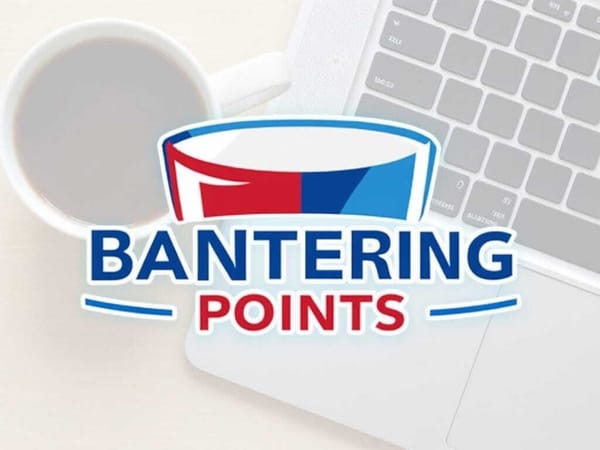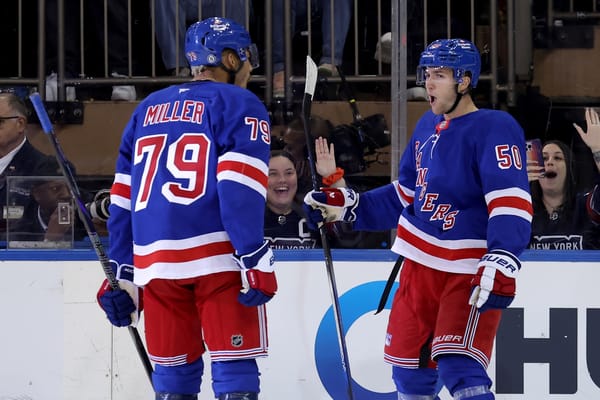The fallacy of depth charts, and the Rangers need for niches
Derek Stepan's return is on the horizon, meaning the logjam of forwards the team has is about to add one more piece of lumber.
Almost made it a full 10 games without explicitly saying Tanner Glass should be taken out of the Rangers lineup.
Well, it was a nice run, though this is much more than that.
And what the Rangers will have to likely do next week will be more than benching one player (any guess into who we think it should be?). When Derek Stepan returns, the answers he'll bring back into the lineup will also come with more questions. As it stands, the Rangers lineup is already packed to the brim in terms of bodies. Adding one more to the mix is only going to crowd the deck a bit more.
What Stepan adds and how he fits in is known, while not much else is. The undisputed top center for the Rangers, Stepan will likely skate with Rick Nash. (Consider the job Nash has done already without playing with an actual, accomplished center. Of Nash's 109 5v5 minutes, nine of them have been with Derick Brassard, the closest the Rangers have come to giving Nash a Stepan replacement.)
Alain Vigneault will face some difficult decisions with Stepan slotting back in. These really don't come as a surprise, and to assume the Rangers don't have a contingency plan in place would be rather shortsighted.
Potentially what bodes the best for the Rangers is Vigneault's track record. With an incredibly deep talent pool last season, Vigneault not only navigated crafting an effective lineup, it became one of the Rangers' strengths. But only did it become a strength when Vigneault realized one thing, a philosophy he'll need to re-adopt this season if the Rangers are again going to maximize what they have on their roster...
Depth charts are dumb
We have a fascination with titles. Because of the offensive load Nash carries, the right-winger "needs to be on the Rangers top line." This isn't true, exactly.
What Nash needs is to be deployed on a line that is positioned to succeed offensively. In essence, the Rangers top offensive line. That would be a better name for it.
In 2013-14, it was the Brassard line, complemented by Mats Zuccarello and Benoit Pouliot that buoyed the Rangers postseason success. Many became obsessed with labeling it the team's "third line," but any frequent observer of the team would have told you they were at the very least the team's second line, at least in terms of how important they were in the pecking order.
What Vigneault has again begun to do this season, and has helped the Rangers skate through some rough waters early on, is putting his players in positions to succeed. For everyone who thought "Carl Hagelin has to be a top six forward," Vigneault has put the speedster on a line with Dominic Moore and Lee Stempniak, and flooded the line with defensive zone starts. On the institution that is a depth chart that line comes third.
In reality, this is the approach that best suits the Rangers, or really any team in the league. One could assemble a trio of top-talented, and defensively accountable players, maybe the likes of Patrice Bergeron, Marian Hossa, and Loui Eriksson, and call them their team's top line. Except in this scenario, the team would still be best suited giving that line a high number of defensive zone starts.

 Bruce Bennett, Getty Images
Bruce Bennett, Getty Images
After Anthony Duclair scored the game-tying goal during Monday night's crazy comeback victory of the Wild, Vigneault proclaimed, "Talent has no age. When you're talented and you go on the ice and you perform, you play."
This is where, in theory, the Glass case should crack.
If talent has no age, likewise, price tag should also not determine talent. Glass will cost nearly twice what Duclair does against the cap this season, but there's no arguing which player is twice as valuable to the team as the other.
When Stepan returns, someone is going to have to come out of the lineup. Regardless of what the Rangers decide to do with Kevin Hayes at that time, it's also time (or really overdue) for Glass to take a seat.
Should the team come to the conclusion Hayes isn't one of the 12 forwards who should be a regular, maybe because of his inability to win faceoffs, or maybe his inability to win a wing job over the rest of the group, then maybe it's time to send him to Hartford for seasoning.
What Vigneault will need to do is figure out how to construct a line, or perhaps two lines that can be deployed in defensive roles. Last season, he so brilliantly crafted a line of Brian Boyle, Derek Dorsett, and Moore. It was perhaps a unit whose strengths made up the league's most effective fourth line.
As it stands, the Rangers simply can't maximize what they have, or replicate what they did last year, with Glass dressing every night. Whichever line Moore lands on will play tough, defensive minutes. As was the case last season, Moore probably fits best on the fourth line.
And the Rangers have internal players who Vigneault can play with Moore and re-create what they did last season. A line of Moore, Stempniak, and Chris Mueller (Jesper Fast is really the answer, but he doesn't appear to be getting called up any time soon) could fill that role.
The only thing worse than the team giving Glass a three-year deal that pays about $500k less annually than Boyle is continuing to play him every night, if only to justify the contract, or maybe because, for some misguided reason, they think he makes the team more competitive.
Duclair can't come out of the lineup. He simply can't. The days of that even being a question (which were always illogical), should be over. Meanwhile that doesn't have much of a bearing on Glass, because each player is pegged in entirely different roles. Vigneault has made it clear all along Duclair needs to be getting a certain number of minutes, allowing him to pitch in offensively. He's going to do that now moving forward, because he's proven himself more than capable.
We're still left with Glass, a career enforcer being used in a shutdown role (only Moore and Hagelin have a lower OZS%). Glass is a possession sieve, and isn't doing much to limit the other team's top weapons. Glass has been seeing time on the penalty kill, a role that will decrease or stop altogether when Stepan returns.
This has nothing to do with Glass not fitting in on a fourth line. More to the point, this is Glass not fitting in on a line that can play those tough minutes, late in games, against quality competition. If that was the Rangers "third line," Glass wouldn't fit there. The same can be said of the second or first.
So here sit the Rangers, having done a pretty good job piece-working the first stretch of their season sans possibly their most important forward. And here they'll sit, saddled with a numbers game, and one in which 15 should be the odd-man out, and not just because of what we know about integers.




